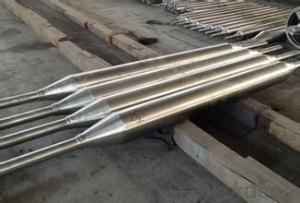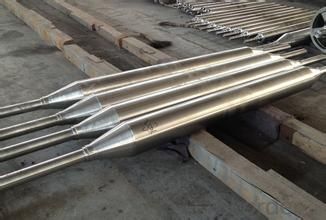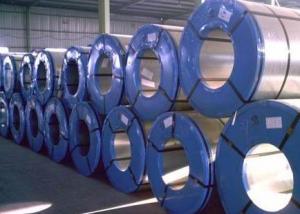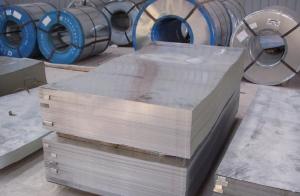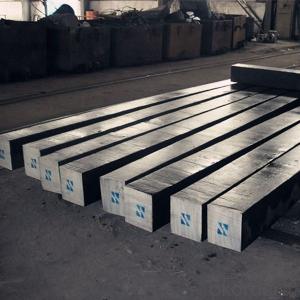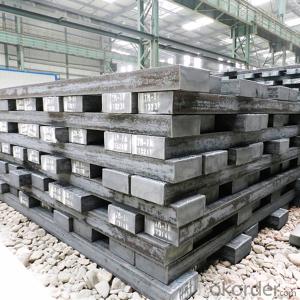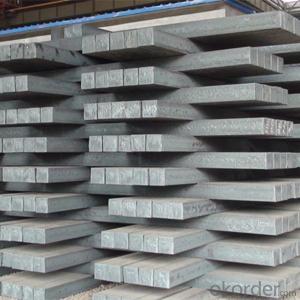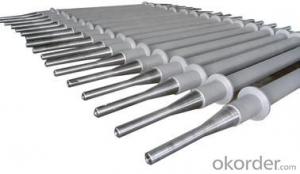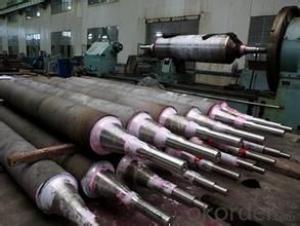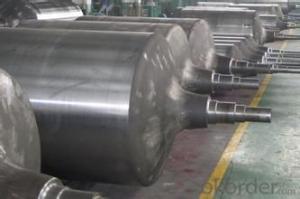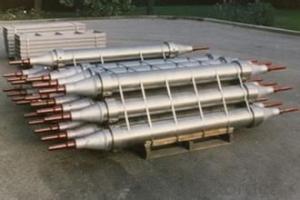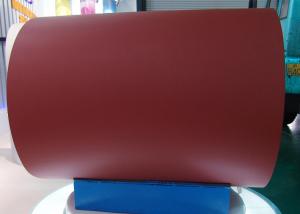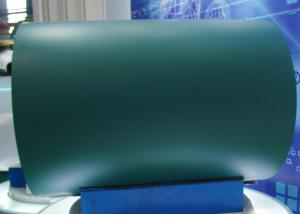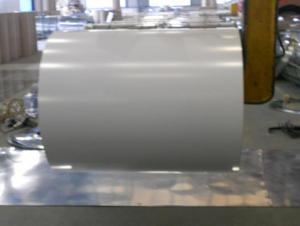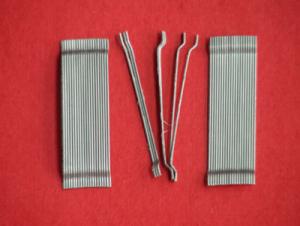Centrifugal Casting Heat resistant furnace hearth roll with good price
- Loading Port:
- Tianjin
- Payment Terms:
- TT OR LC
- Min Order Qty:
- 1000 PCS
- Supply Capability:
- 10000 PCS/month
OKorder Service Pledge
OKorder Financial Service
You Might Also Like
Quick Details
| Condition: | New | Type: | Other | Usage: | Heat Treatment Furnace |
| Place of Origin: | Brand Name: | Dimension(L*W*H): | OD70 to 1400mm | ||
| Weight: | according to drawing | Certification: | ISO9001:2008 | Warranty: | 12 months |
| After-sales Service Provided: | Overseas third-party support available | Application: | continuous annealing furnace, heating treatment furnace, etc | Material: | heat resistant alloys, cobalt base alloys |
| Standard: | ANSI, ASTM, ASME, DIN, GB | Test: | PT UT RT | Technics: | Centrifugal casting/spun casting |
| Advantage: | Experienced staff ,complete inspection facility to assure quality |
Packaging & Delivery
| Packaging Detail: | seaworthy wooden case ,or as per buyers' need. |
| Delivery Detail: | according to contract and quantity. |
Specifications
furnace roll
1.Standard:ANSI, ASTM, ASME, DIN, GB
2.Certificate: ISO9001:2008
3.Size: according to drawing.
centrifugal casting heat resistant furnace roll
Product Description
Product name | Furnace roll |
Material | High nickel and high chrome heat resistant alloys, cobalt base alloys, like HU, HT, HK, HP, HW, 24/24NbTiZr, 50Cr/50Ni (2.4813), 1.4865, 1.4849, 1.4848, 1.4410, 1.4059, 1.4841, 1.4845, 1.4852, 2.4879 or as per customer's requirements
|
Application | Working at high temperature environment on average: 800 to 1200°C,used in steel mills like continuous annealing furnace, heating treatment furnace, etc. |
Process | Barrel/tube is made by centrifugal casting and will be machined subsequently. Shaft/journal will be |
Standard | ANSI, ASTM, ASME, DIN, GB |
Specification | According to drawings |
Certificate | ISO9001:2008 |
Packaging & Shipping
sea worthy packaging, wooden case or according to requirements
WELOCME YOUR INQUIRY AND IF ANY QUESTION, PLEASE FEEL FREE TO CONTACT US!
- Q: What are the different types of steel storage racks?
- There are several different types of steel storage racks, including pallet racks, cantilever racks, drive-in racks, push-back racks, and flow racks. Each type is designed for specific storage needs and offers unique benefits and features.
- Q: How are steel profiles used in the construction of high-rise towers?
- Steel profiles are used in the construction of high-rise towers to provide structural support and stability. These profiles are often used as beams, columns, and braces to carry the weight of the building and resist external forces such as wind and earthquakes. The high strength-to-weight ratio of steel makes it an ideal material for constructing tall buildings, as it allows for greater design flexibility and reduces the overall weight of the structure. Additionally, steel profiles can be fabricated off-site, making construction more efficient and reducing on-site labor.
- Q: What are the main properties of steel?
- The main properties of steel include high strength, durability, versatility, and excellent thermal and electrical conductivity. Additionally, steel is known for its corrosion resistance, ease of fabrication, and recyclability.
- Q: What are the different types of steel cladding and roofing available?
- There are several types of steel cladding and roofing options available, including corrugated steel panels, standing seam steel roofs, and metal shingles. Each type offers unique benefits in terms of durability, aesthetics, and ease of installation.
- Q: What are the common uses of steel pipes and tubes?
- Steel pipes and tubes have a wide range of common uses in various industries. Some of the common applications include transportation of fluids and gases in plumbing systems, infrastructure projects such as water supply and sewage systems, oil and gas pipelines, construction and structural purposes, manufacturing of machinery and equipment, and even in the automotive industry for exhaust systems.
- Q: What are the uses of steel wire mesh in filtration?
- Steel wire mesh is commonly used in filtration due to its durability and ability to withstand high pressure and temperature conditions. It is used to separate solids from liquids or gases in various industries such as oil and gas, water treatment, food processing, and pharmaceuticals. The mesh provides a strong and reliable barrier, allowing for efficient filtration and removal of impurities, particles, or contaminants. Additionally, steel wire mesh can be easily cleaned and maintained, making it a cost-effective and practical choice for filtration applications.
- Q: How are steel products tested and certified for quality and performance?
- Steel products are tested and certified for quality and performance through a series of rigorous evaluation processes. The testing procedures include examining the mechanical properties, such as tensile strength and hardness, as well as conducting chemical analysis to ensure the correct composition of the steel. Additionally, destructive and non-destructive tests are conducted to assess the product's weldability, impact resistance, and dimensional accuracy. These tests are performed by qualified professionals and certified laboratories, following industry standards and specifications. Once the steel products pass all the required tests, they are granted certification to guarantee their quality and performance.
- Q: What are the different types of steel staircases and handrails available?
- There are several types of steel staircases and handrails available, including straight staircases, spiral staircases, curved staircases, and floating staircases. Handrails can be designed in various styles, such as traditional, modern, or minimalist, with options for round, square, or rectangular profiles. Additionally, steel staircases and handrails can be customized with various finishes, such as powder coating, brushed or polished stainless steel, or even glass infill panels for a sleek and contemporary look.
- Q: How does steel compare to other materials like aluminum or wood?
- Steel is generally stronger and more durable than both aluminum and wood. It has a higher tensile strength, making it better suited for structural applications. Steel is also more resistant to fire, pests, and rotting compared to wood. On the other hand, aluminum is lighter and more corrosion-resistant than steel, making it preferable for certain applications like aerospace or marine industries. Ultimately, the choice between steel, aluminum, or wood depends on the specific requirements and characteristics needed for a particular project.
- Q: What are the different types of steel channels and their uses?
- There are several types of steel channels, including C channels, U channels, and Z channels. C channels are used primarily for structural applications, such as supporting beams and columns. U channels are commonly used for framing and edging materials, as well as in construction projects. Z channels are typically utilized as purlins or girts in metal roofing and siding systems. Each type of steel channel has its own specific uses and applications based on its shape and structural properties.
Send your message to us
Centrifugal Casting Heat resistant furnace hearth roll with good price
- Loading Port:
- Tianjin
- Payment Terms:
- TT OR LC
- Min Order Qty:
- 1000 PCS
- Supply Capability:
- 10000 PCS/month
OKorder Service Pledge
OKorder Financial Service
Similar products
Hot products
Hot Searches
Related keywords
